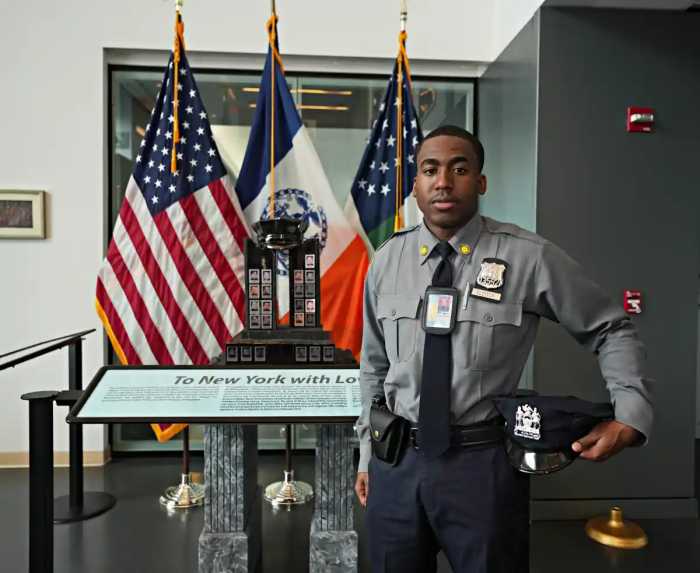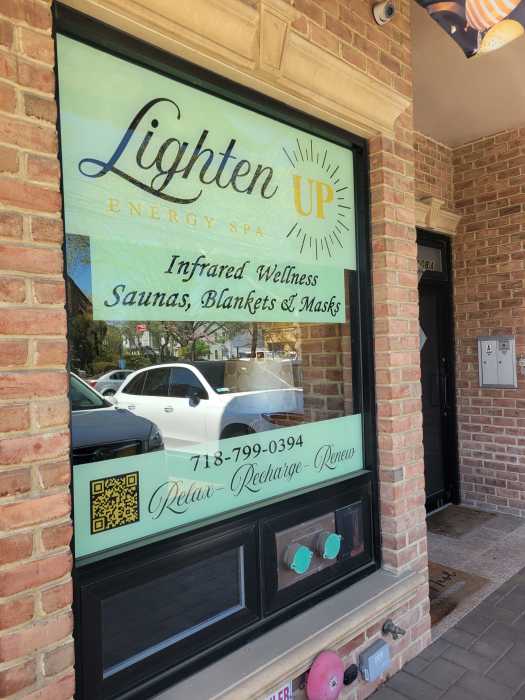By Alex Ginsberg
What do architect I. M. Pei, choreographer Alvin Ailey and actor Christopher Reeve have in common?
Each qualifies to be inducted into the New York City Hall of Fame when the institution makes its selections in early 2004.
Never heard of the New York City Hall of Fame?
That's because it doesn't exist – at least not physically. The project, conceived and organized by retired Flushing businessman Albert Stern, is only a Web site right now. And because the first honorees have yet to be inducted, New Yorkers can nominate deserving candidates right now at www.nychalloffame.org.
Stern, 60, came to the idea while watching a Mets game in the summer of 2001. When a commentator mentioned baseball's Hall of Fame in Cooperstown, N.Y., he immediately began to wonder why there was not a similar institution for New Yorkers.
“Not only do they have the greatest city in the world,” Stern said of his fellow citizens. “But some of the people who live here are the greatest people in the world.”
His dedication to the idea intensified a few short months later, when the Sept. 11 terrorist attacks occurred.
“Boy, this city really needs a boost,” he recalled thinking at the time.
The friendly and upbeat Stern, who has lived for 30 years in a modest but comfortable seventh-floor apartment off Northern Boulevard, said he also felt a responsibility to do his part for the city after a successful career managing several businesses.
So with the help of an attorney, five friends and Stern's encyclopedic knowledge of the city (he volunteered for many years as a guide to tourists who wanted to see Queens), the New York City Hall of Fame was born as a non-profit museum with a Web site and grand ambitions.
Once the organization gains notoriety and builds a nest egg, his plan is to set up a physical museum where city residents and tourists from around the world can view artifacts, exhibits and three-dimensional holograms depicting the lives and exploits of those city residents who have achieved greatness.
And in a move likely to shock Manhattanites, Stern favors a location in Woodside – the geographical center of New York City – over Midtown Manhattan, Museum Mile and other tourist centers. Taking MoMA Queens in Long Island City as his inspiration, he said that given the right promotion, many tourists would make the trip from Manhattan to see a New York City Hall of Fame. Some of those, he believed, might even stop in on their way to and from the Queens airports.
“You have to have a little vision,” said Stern, who was wearing a T-shirt that said “5 out of 4people have a problem with fractions.”
But first his organization will have to induct members, a process that will rely on nominations from visitors to the Web site. To make a recommendation, a person must be at least 18 years old and a resident of the city.
There are also some rather strict criteria for those nominated, beginning with the requirement that the nominee have lived in the city at some point. If the person achieved notoriety during the period when he or she was a city resident, then it does not matter what exactly the prospective Hall-of-Famer did. But if the nominee achieved greatness while living outside New York, then the deed must somehow have benefited the city.
In marked contrast to the Baseball Hall of Fame, which has admitted such notorious bigots as Ty Cobb and Steve Carlton, Stern will also stipulate that his nominees must be individuals of “principle and integrity.”
And in another departure from standard form, the New York City Hall of Fame will not require fame. Stern hopes many nominees will emerge from relative obscurity.
“There's so many people that have done so much good work for the city,” he said, “and they don't get recognized.”
Nor does the nominee even have to be a person. The United Negro College Fund is one of 11 examples listed on the Web site – one for each category the Hall recognizes – of suitable nominees.
The categories are architecture, business development, charitable contribution, communications, cultural contribution, education, health and science, heroism/act of bravery, sports and entertainment, humanitarian and volunteerism.
The Web site will accept 50 nominations in each field during each calendar quarter. At the end of the year, a panel of judges will weed that down to one finalist in each category. The inductees – living and dead, human and corporate – will be honored at a gala event in the spring of 2004.
Those inductees could include Pei, Ailey and Reeve, but not necessarily. Stern did not want to identify anyone who had actually been nominated until the selection process was complete, and offered those only as examples.
Could Stern himself be a possible inductee?
He was born in Brooklyn in 1943, moved to Flushing in 1973 and retired from his job managing a photo retail chain in 1995. He still volunteers when he is not working to get the Hall of Fame off the ground.
But Stern does not seek that sort of recognition. Just something small.
“It would be nice to know that when I go to the hereafter,” he said, “there will be a plaque on a building that says, 'New York City Hall of Fame was founded by Albert Stern.”
Reach reporter Alex Ginsberg by e-mail at Timesledger@aol.com or call 718-229-0300, Ext. 157.
































